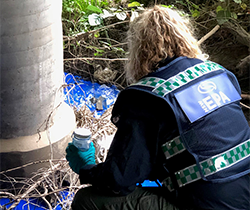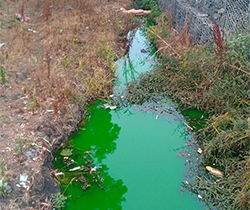Tips on what to do if you see, hear or smell pollution
Reports from the community can play an important role in investigating pollution incidents. These can include air, noise, water and waste issues. Follow these tips to report pollution in a safe and lawful way.

Careful community reporting of pollution is of great assistance to the EPA's response and operations
Follow these tips to report pollution and note that it’s important that you collect information only if it is safe and lawful to do so.
- If it is not an emergency, and it is safe to do so, you should contact the source or person causing the pollution.
- If it is an EPA licensed premises (with an Environment Protection Licence), they are required to have a complaints line, and may be able to take immediate action.
- The best way to make a report is via our 24/7 Environment Line on 131 555. They will be able to help you determine who is responsible.
- The EPA needs a certain level of detail to be able to investigate an incident or issue effectively:
- Who: observed the incident (note: you can remain anonymous)
- What: is the issue e.g. dust, noise, odour
- When: what was the time and date, how long did it last? Has this happened before?
- Where: the location of the incident
- How: has it impacted your health or comfort, or damaged your property?
- Do you have any photos, video or other information?
See the whole fact sheet on reporting to the EPA.

Identifying the source of an odour or other pollution can be a challenge
What is that smell?
In addition to the tips above on reporting pollution, the EPA has a new fact sheet on how to report odours.
- Can you identify the source?
- When and for how long has the odour been there? Has this happened before, and have you kept a log?
- What does the odour smell like? How would you rate it? The fact sheet has an odour log for odour descriptors and strength ratings.
- What were the weather conditions?
- Has the odour impacted your health or comfort?
See the whole fact sheet on reporting odours.

